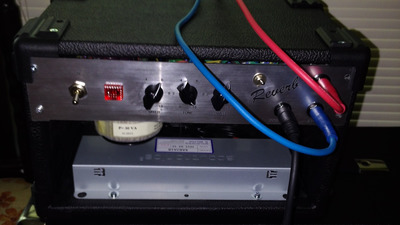(Guitar) Amps
A little disclaimer before I begin: NOTICE THAT TUBE AMPS CONTAIN ALWAYS LETHAL VOLTAGES. THESE VOLTAGES MAY BE PRESENT EVEN THOUGH THE AMP HAS BEEN OFF FOR A LONG
TIME AND CAN DO DAMAGE TO YOU OR YOUR PROPERTY. ALWAYS HANDLE HIGH VOLTAGES WITH CARE AND RESPECT.
I'll probably post more making of pictures afterwards but in the meantime you can follow my social media for making of info.
Steam Pan preamp
Here is my Steam Pan preamp which is based on the overdrive channels of the Steam Machine MK I. The preamp has foot switchable two eq boost.
From the switchable eqs the other has mid control around 400Hz and the other about 1kHz. It has also foot switchable boost and clean/drive switch and as can be
seen/heard with the boost even the clean channel gets pretty heavy.
You can hear this amp in:
https://www.youtube.com/watch?v=A-i33adW4lE
https://www.youtube.com/watch?v=A-i33adW4lE
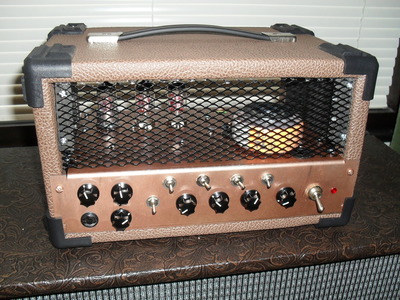
Steam Machine MK I
My first own design amp based on the British and German sounds. This amp has actually low operating voltage around 50V and the output power with full distortion is
about 1W. Operating power tubes with voltages this low gives very saturated sound like driving full master in British style amp or using a variac with an amp.
You can hear this amp in:
https://www.youtube.com/watch?v=LuhH8rw-OmI
https://www.youtube.com/watch?v=LuhH8rw-OmI

Steam Machine MK II
My own design amp based on the British and German sounds. This amp has a different channel topology and voicings than MK I. Also this one has switchable tube/solid
state rectifier and switchable power tube options 6L6/EL84 although I have tested it also with EL34 tubes it is not optimized for them.
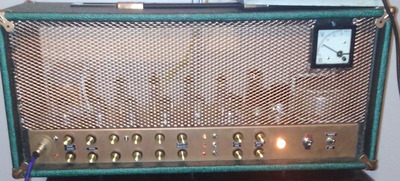
5e1 style amp
Modifications to the original 5e1: Adjustable bias potentiometer, bias measuring points, bigger transformers and tubes, precense control, depth control,
only one input jack/channel, and 47nF capasitor in the input jack.
You can hear this amp in:
https://www.youtube.com/watch?v=1nwM1EyfUtg
https://www.youtube.com/watch?v=1nwM1EyfUtg
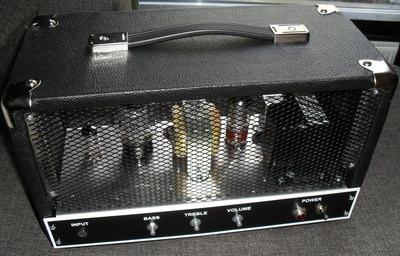
AC15 style amp
Modifications to the circuit: normal channel of AC15 only, 47nF capasitor in the input jack, bypassable EF86
(can be used as a poweramp by feeding the phase inverter 12ax7 directly), and switchable negative feedback loop.
You can hear this amp in:
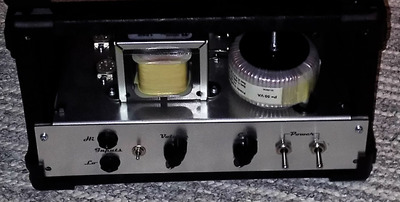
SLO style amp
Modifications to the original SLO schematic: FX loop bypass switch, FX loop line/instrument level switch, foot switchable clean/crunch, panel switch for
clean/overdrive channel, depth mod, preamp out/poweramp in jacks, bias measuring points, switchable dummy load, line output, and 47nF capasitor in the input jack.
You can hear this amp in:
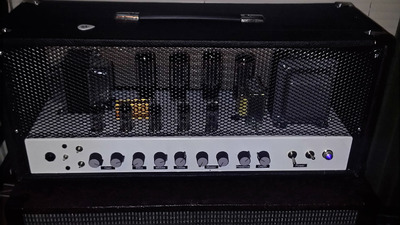
G-style amp
This preamp was inspired by certain German rack preamp. My implementation lacks all the parts except the actual modded tube distortion
circuit. Some of the modifications: extra capacitor at the input, grid stopper resistors to cut down some high frequencies, modified
some cathode resistors and
bypass capacitors.
In addition this preamp runs with lower plate voltages and in fact they can be adjusted with the voltage pump from 60 to 260 volts. I had some
problems with the crosstalk which I guess is caused by high impedances in gain stages and that the preamp being built in relatively small chassis.
However I think the
result is a success.
You can hear this amp in:

M-style amp
The goal of this amp was to combine as many British style amp circuits into one chassis as possible with switchable cathode resistors and bypass capacitors.
The poweramp section is single EL84 to make it possible to be overdriven in relatively low volume (or
at least power). I think that the amp may reach 3 to 5 watts. I'm quite satisfied with the results that range between sweet vintage
sounds to more modern British sounds and with a tubescreamer pedal in front and master volume at 11 this beast will satisfy the modern metal sound
requirements.
You can hear this amp in:
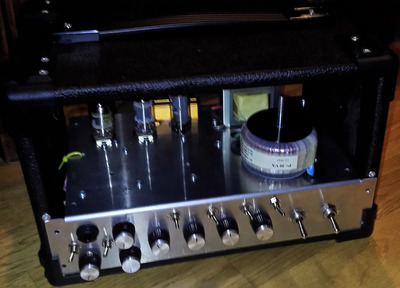
Tube driven reverb
This is build from a kit from Tube-Town (http://www.tube-town.net/ttstore/Kits/Verstaerker/TT-Kit-Tube-Reverb::6223.html) with few
modifications:
extra
input
capasitors, footswitchable dwell control, relay controlled reverb on/off footswitch, and I swapped 12AU7 for the 12AT7 tube.
You can hear this in:
